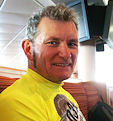I've never been one for indoor training. To me, it's hours of endless grind for no apparent reason.
I tried it about a decade ago and found it underwhelming. This was in the early days of Zwift, when cycling in a Perspex tube underwater seemed the obvious way to encourage cyclists to train more. I got myself a Jet Fluid trainer from the interwebz, a spare rear wheel for my Ribble, and a trainer tyre - old-school turboing. I had nowhere to train properly so I alternated between the kitchen and the conservatory, depending on the outside temperature.
I mean - it was so boring. I had no idea of how long to ride, and what, if anything, it achieved. Others I knew who regularly trained, the friends who'd kindly wait for me at the top of every climb, had training plans and some even had professional coaches. They would talk of FTPs and power riding and cadence drills - it all sounded like too much hard work.
I did a couple of Zwift rides - on a free trial around Watopia - but without the numbers to work at, with no training plan, it seems utterly pointless. I would go out on a rainy ride and get too wet - go on a wintery ride and get too cold.
Things began to change as the training units got smarter - I'm not talking Cyberdyne Systems and Skynet here - they started to focus on making turboing both cheaper and simpler. As the hardware collected more metrics, the dedicated training software got more integrated. Zwift, and systems like it, was no longer a Midtown Madness for bikes (with graphics to match). It became more interactive and more realistic.
There's a veritable cornucopia of platforms for training now, all integrated and calibrated to metric the bejeezus out of you. Despite being around for about the same time, not much has been heard (by me at least) of Rouvy. Unlike Zwift and its fictional island in the Tasman Sea, Rouvy has been designed to offer a range of realistically augmented routes based on real roads and real rides.
Rouvy uses actual video footage (more than 1300 routes) and overlays it with CGI riders. This gives it a great advantage over Zwift (and the recently retired Wahoo RGT), producing a beautifully immersive ride. All the output from your favourite toys (power meters, cadence sensors, HRMs) is seamlessly integrated into an engaging but unobtrusive display.
Or at least it would, if I had a platform it would run on. I initially tried loading it on my Chromebook, but I was soon to discover that a ChromeOS version was still in the pipeline. Undeterred, I tried my trusty old iPad, my wife's Macbook, and my Android phone. None but the phone would work (they're all old and a few years past their upgrade limit - a bit like me).
Eventually I found a dirt-cheap Windows tablet on eBay and got it to run on a screen that didn't need me to pause riding and trombone my Samsung back and forth to read what was about to happen.
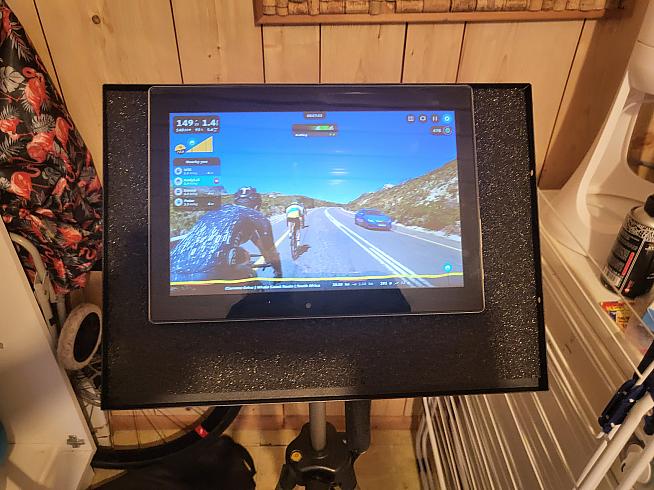
I was determined not to bimble around like the nearly fifty-year-old version of me, so I chose a basic training plan from the huge range Rouvy has to offer. It's not quite as integrated as Wahoo's SYSTM (which has had the big bucks to hoover up Sufferfest, Speedplay, and other helpful brands into its ecosystem) but the training rides and goals are well thought out and easily customisable.
Before I could hit the cyber-tarmac, I needed to build my athlete profile, and using the precise method of "AnyOldBollocks" gave myself a Functional Threshold Power (FTP) roughly three times my age. I picked out a nice avatar and a virtual Giant Revolt. As a benchmark, I tried a sedate-looking 30-minute virtual ride along the Whale Coast in South Africa ...and had to bail out less than 15 minutes in, I felt that unfit.
My virtual partners - Rouvy lets you ride with an equally matched FTP-based spectral peloton - rode off and left me behind, and probably slagged me off in machine code at the top of the hill I couldn't climb.
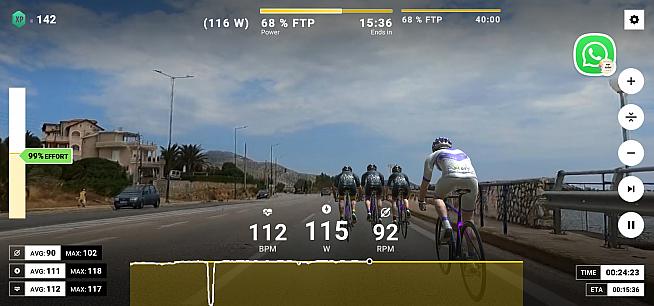
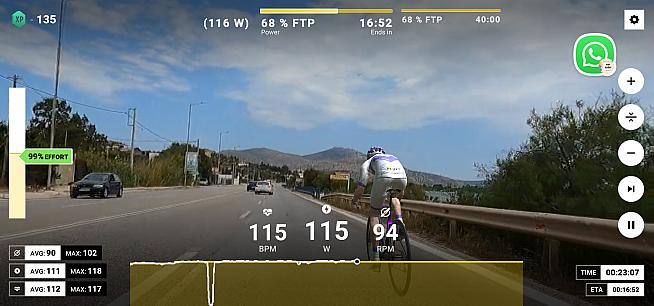
A few days into my workout schedule (three varied rides a week for four weeks) I began to feel the benefit of the program. I modestly adjusted my FTP to best test my top efforts and found, rather surprisingly, that I wasn't too far out in my estimate. The sessions built technique and fitness in incremental stages, so by the third week of my plan I was maximising my time on the bike and using the warm-up and cool-down as dictated on the rides.
At the end of week four, I took the Whale Coast route again and was amazed at the difference it had made. I'm not a competitive rider and normally do most of my rides solo, but being better matched to my ethereal ride buddies meant I could pace myself up the climbs and even beat them to the sprints. During this ride I noticed another rider join on, about 4 kilometers in, and began to wonder what it would be like to be overtaken by another Rouvist. Much to my surprise, as they got nearer, I found myself pushing harder and was determined to beat them to the end - sorry about flicking you the v's anonymous fellow rider.
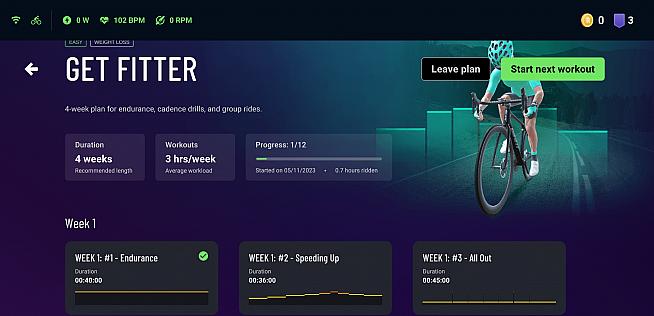
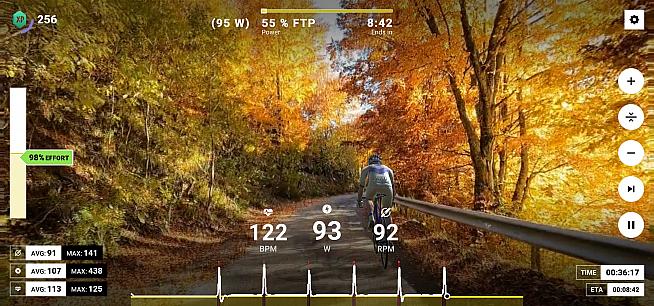
It gets a bit funky when cornering as you (obviously) stay upright while your avatar leans over like a MotoGP rider, defying the laws of logic and physics. There are a couple of occasions when the video footage smoothes a cornering line through a stationary object, like a double-parked delivery van. Your ride spooks merge and split alarmingly when it all gets a bit tight for space, but that's one of the fun things about this.
Rouvy's as close as you can get to regularly riding outside I feel is possible without the inconvenience of the cold, wet, dirt, and actual physical peril. If you've spent all your money on a Smart Trainer and you can't go for a week of winter sun riding with your cycling club, there's a reasonable chance that you could do all the rides they plan to do from the relative comfort of your Pain Cave.
I'm a real convert to indoor training for the winter - we've only just had the shortest day up here in the Northern Hemisphere and there are a lot more miserable, dank, windy nights to get through before next spring. I'm finding it a great way to counterbalance the excesses of the festive season too, and it's a relief not to be constantly checking the weather to see if "today's ride" has had to be binned due to sections of it being under water or fallen trees.
It's fair to say I'm feelin' Rouvy.
0 Comments

